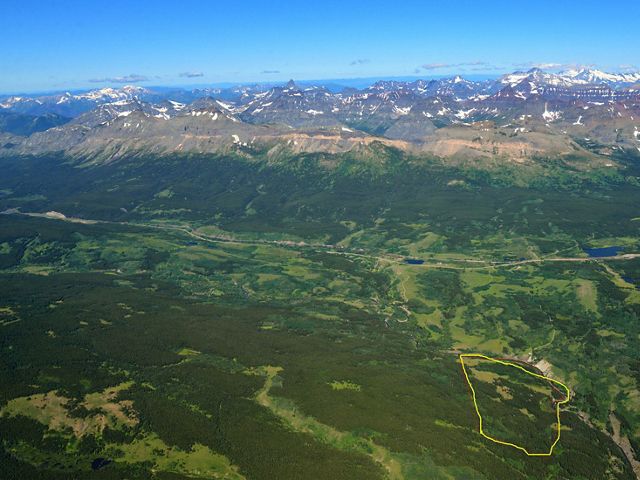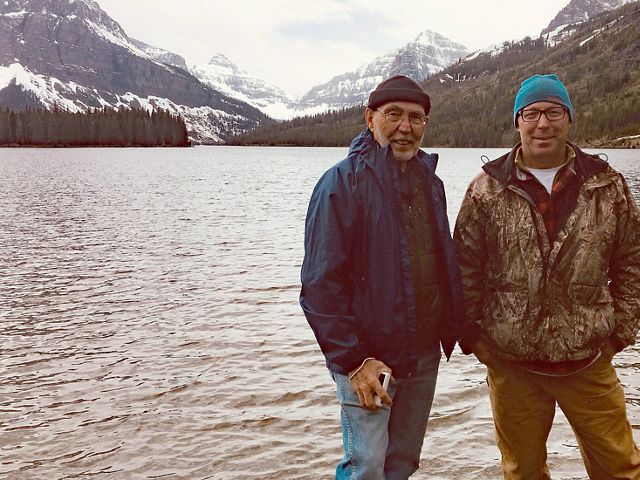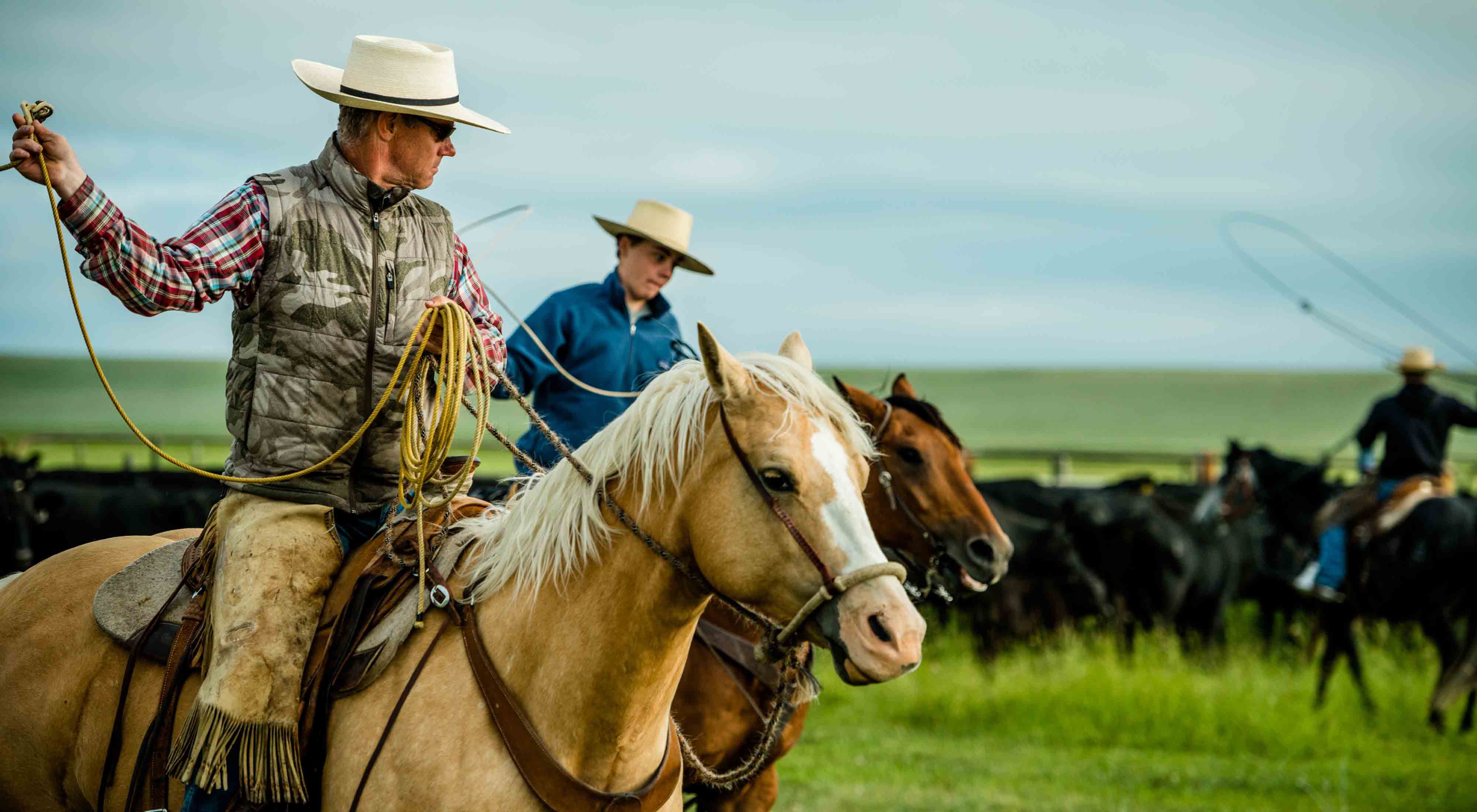- Phone: 406-443-0303
-
Follow
This glorious collision of mountain and prairie creates a treasury of natural diversity.
- Switch to:
- About
- Recent Projects
On Montana’s Rocky Mountain Front, the mountains meet the prairies in a dramatic convergence of rocky cliffs abutting grassy hills. The result is one of the most biologically rich regions in the entire country. It's one of the last places where grizzly bears still venture out onto the open plains. And though herds of bison are all but gone, all animals found here by the Lewis & Clark Expedition, still roam free.
Threats
The greatest threat to the Front is subdivision of large ranches that maintain open space and habitat on private lands The low profit margins in agriculture increase the temptation to sell land at the high values offered by second home and recreational markets. Development of oil and gas deposits on private land also poses an increasing threat.
As in other places, subdivision threatens wildlife by fragmenting vital habitat. Grizzly bears use huge ranges on the Front—up to 250 square miles for males and their need for privacy can truly be hampered by dividing even a portion of a large ranch, as well as increase the odds of human-bear conflict. Scattered development also interrupts the migration of pronghorn, elk, and moose.
Goals & Solutions
Partnership is the strong foundation on which we’ve built an extremely successful conservation strategy. Although the mountainous portions of this region are largely public land, the grasslands remain dedicated largely to private ranching. The commitment of local landowners to good stewardship, to co-existing with wildlife, and to resisting development has made them extraordinary partners in this effort. The contributions of information, expertise, and funding by public agencies and non-profit organizations provide another essential link for community based conservation on the Front.
Our goal is to ensure that of all the plant and animal species here will thrive long into the future. We focus both on critical core habitat, and the essential links between public and private lands that enable animals to reach all the habitat they need throughout the changing seasons. To protect this special place, we work in concert with our partners to employ a suite of tools, ranging from direct purchase of land to securing conservation easements.
Our close partnership with the community has also resulted in unified efforts to effectively manage noxious weeds and influence public policy that support our conservation goals.
Sometimes, big things come in small packages. That’s the case with the conservation easement donated by the Gordon family to The Nature Conservancy in Montana. The 146.6-acre parcel on the north edge of the magnificent Badger–Two Medicine area of the Rocky Mountain Front would have been ripe for development, but that won’t happen thanks to the generosity of Doug Gordon and his family.

The Blackfeet (Pikuni) People consider the Badger-Two Medicine sacred ground. According to Chief Earl Old Person, the land is on the north edge of the Badger–Two Medicine, a natural treasure on the Rocky Mountain Front. For the Blackfeet, it has been sacred—a place of healing and peace—for millennia. According to Earl Old Person, “For thousands of years Badger–Two Medicine has shaped the identity of our people. I have always been told by our elders that our responsibility was to save those lands for our children and all future generations of Pikuni People.”
The property and surrounding area are also critically important for wildlife, such as grizzly bears that must move between Glacier National Park and the Bob Marshall Wilderness Complex.
Doug Gordon loves this land and penned this essay about its history and importance.

The Place
A quote from Mark Twain was later appropriated by another great American humorist, Will Rogers: "Buy land, they ain't making any more of the stuff."
If either of them could have foreseen the condition of so much of the world's 21st century environment, they might have changed the "buy" to "preserve".
There are various reasons for land owners deciding to pursue a conservation easement for part or all of their land holdings. Speaking for my family our reasons were:
- Preserve the land and its environment in as pristine state as possible
- Preserve the legacy of the land handed down over four generations
- Play a small part in preserving the natural land bridge between Glacier National Park and the Badger-Two Medicine area sacred to the Blackfeet Nation. This land bridge facilitates the natural movement and the annual migratory route for grizzly bear, black bear, mountain lion, elk, deer and moose.
My grandfather, Jim Gordon, was drafted into WWI and suffered body burns and respiratory injuries from a mustard gas attack during the Battle of the Argonne Forest in France. When I was a small boy, he told me some stories about the war and how he vowed never to forget the massive loss of human life, suffering, and the devastation it wrought on the forest environment. Those experiences greatly influenced his love for the mountains of Montana.
In 1946, he purchased a small parcel of land on the South Fork Two Medicine River southwest of East Glacier, Montana, which he called The Place. It was where I spent memorable summer days with my grandparents and later with my son, Vince.
Given the experience Vince gained as a field instructor for the National Outdoor Leadership School based in Lander, Wyoming, as well as his work with the National Science Foundation at McMurdo Station, Antarctica, he developed an intense interest and passion for environmental issues. Focusing his concern on The Place, he urged our family to pursue a conservation easement with The Nature Conservancy. In July 2020, that easement became a reality after six years of negotiation. Following that completion, Vince forwarded to me a quote from David Attenborough, the British natural historian. This quote reflects the depth of our thought and motivation for our TNC conservation easement
"The whole of life is coming to terms with yourself and the natural world. Why are you here? How do you fit in? What's it all about?"
For our part: "Preserve the land, they ain't making any more of the stuff."
Doug Gordon
Make a Difference in Montana
Help the Conservancy work to preserve natural communities in Montana.
